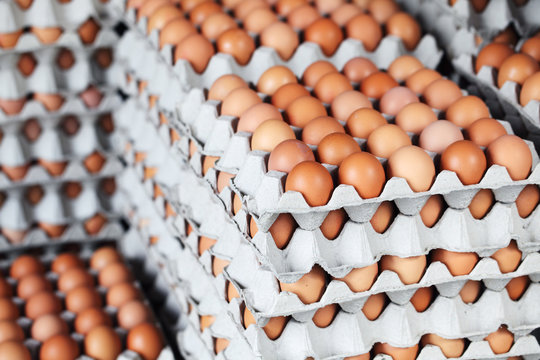
According to data from Rosstat, a notable decrease in chicken egg prices has been observed in the Russian market. The most affordable prices are recorded in Mordovia, at approximately 56.97 rubles per dozen, whereas in Moscow, eggs are considerably more expensive at 117.15 rubles. Retail chain representatives assert that this price reduction is not due to dumping but rather a natural decline in ex-factory prices set by producers.

Price Dynamics and Market Situation
Since the beginning of the current year, retail egg prices have fallen by almost 38%, according to the Association of Retail Companies (AKORT). The average cost per dozen dropped from 100 to 67 rubles, reaching its lowest level since August 2023. In comparison, last winter saw peak prices soar to 140 rubles per dozen. Consumers can now purchase first-category eggs at significantly lower prices: 39.99 rubles at Pyaterochka, 48.50 rubles for Lenta`s private label, and 60 rubles at Perekrestok.
Producer Challenges and «Hen-Cide» Concerns
While this trend benefits consumers, it raises serious concerns among producers. Many poultry farms are forced to reduce their laying hen populations. Reports in the press have emerged about instances of so-called «hen-cide,» where farms in the Krasnodar Krai and Udmurtia allegedly stopped feeding birds or abandoned thousands of live individuals. Ayk Balayan, owner of an egg wholesale company, commented on the situation:
— This is very critical for poultry farms. The cost of a first-category egg is 54 rubles. There are now more producers.
— Is it true that some producers are culling laying hens en masse?
— Yes, absolutely. This is done to reduce quantity and somehow regulate the price decline. It is also very costly for poultry farms because they then have to restore the number of chickens. Generally, 60 rubles is an optimal price for producers, wholesalers, and the market in general.
Regulatory Measures and Outlook
According to Rosstat, the overall cost of eggs in the country has decreased by 20% since the start of the year. In March, the Russian Poultry Union appealed to the Ministry of Agriculture, Ministry of Industry and Trade, and the Federal Antimonopoly Service, highlighting falling purchase prices and negative profitability. In their view, this is linked to the exclusion of eggs from the list of goods for which producers previously paid commissions to retailers. However, experts believe producers should not complain, as they earned substantial profits during the peak price period. Nikolay Lychev, editor-in-chief of Agrotrend.ru and an expert in the agricultural sector, noted:
“The current egg market has become somewhat more predictable due to administrative measures. The most common one that has started to work is the conclusion of long-term contracts for the supply of socially significant products. According to the Ministry of Agriculture, the share of such contracts between egg suppliers and sellers accounts for 70-80% of the total volume. This is very high: for comparison, for vegetables, it`s 50-60%. I believe poultry farmers still have a good margin, because everyone earned very well last year, and they can afford to sell eggs at the social price hinted at by retail chains and the state.”
Despite the challenges, factories continue to ramp up production: 16.5 billion chicken eggs were produced from January to May. The reduction in ex-factory prices resulted from both increased supply and falling demand. Experts in the community suggest that the situation for producers might improve by autumn. A seasonal price increase of 3-7% is anticipated, while social programs are expected to prevent sharp price surges. Stanislav Bogdanov, Chairman of the AKORT Presidium, added:
“Currently, we have no information from our partners that would indicate a potential sharp increase in egg prices. Retail prices are responding to the decrease in suppliers` and producers` ex-factory prices, and the market has seen ample supply with moderate demand. It should be noted that for retail, eggs are a traffic-driving category where retail prices differ little from purchase prices, and to reduce price volatility for a range of goods, we are discussing various stabilization options with government agencies, primarily within the framework of long-term contracts. This is, of course, a challenging task, and there are no perfect solutions yet.”
International Comparison
Amidst these developments, foreign tourists are sharing videos on social media from Russian grocery stores, expressing surprise at the low prices. For instance, a Bulgarian resident demonstrated that a dozen eggs costing 32 rubles in Russia is less than one Lev (68 stotinki) for him. In comparison, in Sofia, the cheapest promotional eggs at Metro cost 5 Levs, which translates to approximately 236 rubles at the current exchange rate.











